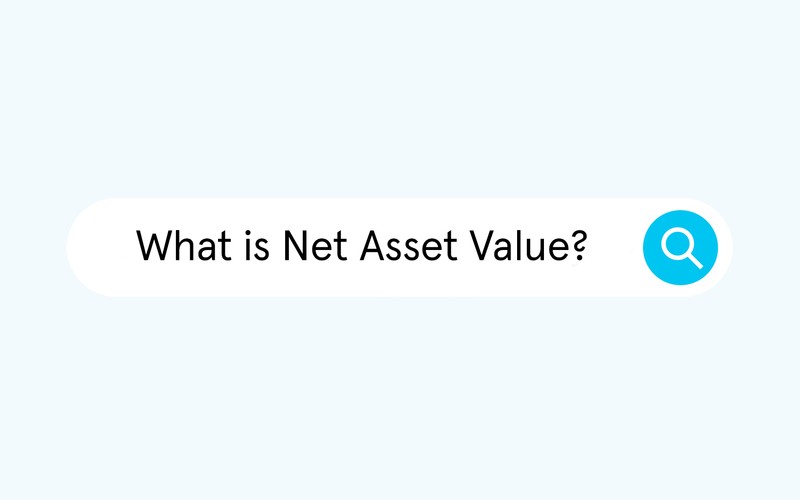For companies and businesses, the net worth or the capital of the company is determined by calculating the difference between the assets and the liabilities. This is also known as net assets. But in order to understand a “per-share” value of a fund and determine its valuation and pricing, the NAV is a more important metric to use. This is important because the NAV helps determine the book value of a business, and it’s an important metric used to understand a company’s growth prospects and find undervalued or overvalued investments. The NAV is also used to evaluate the performance of funds.
In this article, we’ll talk about Net Asset Value (NAV), what it means, how to calculate it using the NAV formula, and how it’s used in business valuation.
What is Net Asset Value?
Net Asset Value (NAV) is defined as the value of a fund’s assets minus the value of its liabilities. Net Asset Value is a term most commonly used in relation to a mutual fund or an exchange-traded fund (ETF). NAV is the trading price of shares of the funds registered with the US. Securities and Exchange Commission (SEC). The SEC rules dictate that mutual funds and Unit Investment Trusts (UITs) must calculate their NAV at least once every business day.
The NAV is calculated by subtracting a fund’s total liabilities from its total assets and then dividing that by the total number of outstanding shares. It helps to see the per-share value of a mutual fund.
For example, if a fund’s assets are $30 million and its liabilities $10 million, its NAV will be $20 million. If in our hypothetical example, the fund has one million shares outstanding, the NAV per share will come to $20. That is, for the given day, the mutual fund shares will be traded at $20 per share.
It’s important to remember that since the value of the fund’s assets and liabilities of an investment fund fluctuates frequently, the NAV will change from one day to the next.
Calculating NAV
The Net Asset Value formula is as follows:
Net Asset Value = (Value of Assets – Value of Liabilities) / Total Shares Outstanding
Let’s break this down further.
Value of assets: The value of a mutual fund’s assets is the total market value of the cumulative investments of that particular fund. It includes cash receivables or cash equivalents, dividends, interest payments, and accrued income.
Value of liabilities: This is the total amount of money owed to banks, pending dividend payments, and audit fees. It also includes operational expenses, such as management salaries, rent, utilities, and distribution expenses.
Shares outstanding: This refers to the company’s stock currently held by shareholders. The number includes share blocks held by institutional investors, as well as restricted shares. A company’s number of outstanding shares changes daily.
Understanding NAV
The Net Asset Value calculation is important because it’s the price at which a mutual fund investor can buy or sell shares. In a closed-end fund that trades in a public marketplace, the NAV is the value of a fund’s assets, which can be compared to the market price to evaluate its market value. For private equity funds, the NAV helps investors see the fund’s residual value and determine the fund’s performance.
Mutual Funds and NAV
Mutual funds take money from numerous investors, which is then used to invest in stocks, bonds, and money market instruments. Each mutual fund will have a different portfolio based on the fund’s investment objectives, the securities its holds, and how much it expects to achieve in returns. Investors get shares in the fund proportional to the amount of money they’ve invested. The pricing of each share in a mutual fund is based on the NAV.
Unlike stocks, which are traded on the stock market throughout the day, mutual funds are priced at the end of the trading day, the cutoff time being the end of trading. Mutual funds are required by SEC regulatory rules to calculate their NAV per share daily, and that becomes the next day’s trading price. The mutual fund NAV is calculated by the fund managers by adding up the closing price of all the securities in its portfolio, adding the value of any additional assets, subtracting the liabilities, and then dividing by the number of shares outstanding.
While most mutual funds are open-end, which means they’re issued and repurchased directly by the fund, there’s also another type of fund known as closed-end funds.
Open-end fund NAV
An open-end fund doesn’t trade on exchanges, and they are priced based on its end-of-day NAV price. Mutual funds are open-end funds. An open-end fund can issue an unlimited number of shares to sell. When shares are redeemed, they are taken out of circulation. A large number of shares being redeemed may require the fund to sell some of its investments.
Closed-end fund NAV
Closed-end funds are listed on a stock exchange and trade similarly to securities. They’re considered public-traded investment companies. The share price of a closed-end fund is not equal to its NAV and is determined by the values of the assets in the fund’s portfolio. The share price, as well as the supply and demand of closed-end funds, often comes down to a mix of market sentiment, the reputation of the fund’s manager, and management fees. Closed-end funds can trade at a premium above the fund’s Net Asset Value or at a discount below their NAV.
ETFs and NAV
While ETFs, or Exchange-Traded Funds, have many similarities with mutual funds, the biggest difference is that they trade like stocks. With ETFs, the NAV and the market price are not the same. The NAV of the ETF is based on its securities and asset holdings, while the supply or demand in the market dictates the ETF market price. ETFs must calculate their NAV daily, but they also estimate it every 15 seconds throughout the business day.
Again, an ETF may trade at a premium or a discount, and professional traders will employ various trading strategies that seek to profit from buying at a discount and selling at a premium. Understanding the underlying value or NAV is crucial, therefore, to an investor, and historical information about the fund is important to have. This is easy to find because ETFs tend to be more transparent than mutual funds. ETFs release their current holdings, amount of cash on hand, outstanding shares, and received dividends daily. Mutual funds only disclose their holdings every quarter.
Private equity and NAV
Private equity shares don’t trade on public exchanges. For this reason, the NAV becomes an important valuation metric that allows investors to interpret or measure the residual value of investments held by the fund. The NAV in private equity funds represents the value of an investor’s shares in the fund at any given time. Like other funds, the NAV is calculated by adding all the holdings and assets and subtracting accrued expenses from this number. The resultant figure represents the total NAV for the fund.
Investors can look at the NAV of a fund over time to see how the fund is progressing. It’s, therefore, a good measure by which to measure growth and value. General partners will also use the NAV to determine the price for potential secondary transactions to third parties. The benefit of secondary transactions is that they allow for the liquidation of private company assets that haven’t gone public and can be used to return capital to investors.
NAV in REIT valuation
NAV is valuable in real estate as well, specifically when it comes to REIT valuation. A REIT, or a Real Estate Investment Trust, is a company designed to own, operate, or finance real estate. When you invest in a REIT, you’re not investing in securities but in real estate holdings.
The NAV in a REIT represents the Fair Market Value or FMV of real estate assets minus any outstanding debt, expenses, and capital expenditures and is the preferred valuation approach for REITs.
The bottom line
The NAV calculation is simple but essential and one that you will run into frequently, not only when you purchase mutual funds or ETFs but when you buy real estate. REITs were created by Congress so that anyone could own income-producing real estate. With their high dividends, low risk, and steady returns, REITs have become an excellent way to get started in real estate and earn dividends.
Get started investing in real estate with Arrived
Take a look at our properties and start building your real estate portfolio today.







